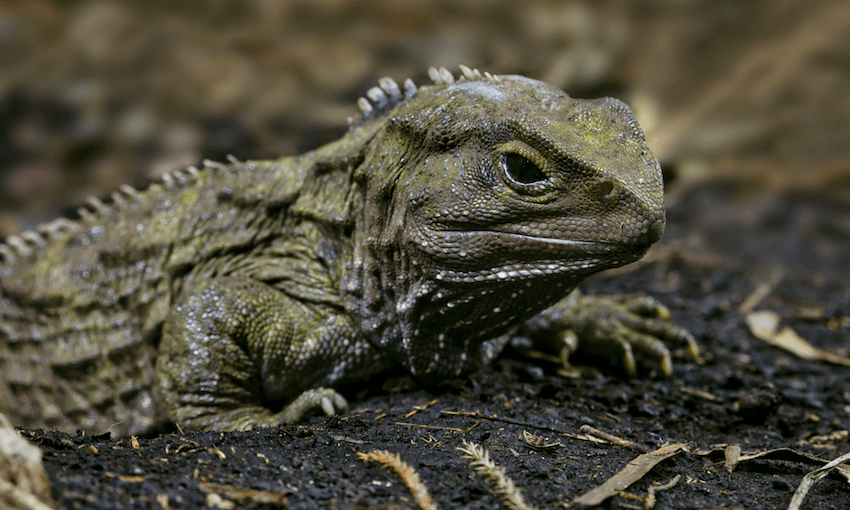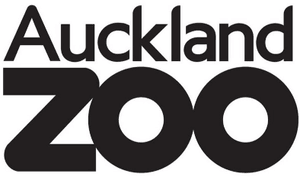Don Rowe meets the animals on the frontlines of New Zealand’s climate change challenge – and the zookeepers fighting to keep them thriving.
In a low-roofed hut at the Auckland Zoo, Richard Jakob-Hoff is staring at a reptile. The tuatara, a young female, is staring straight back. With her head slightly cocked, claws splayed and an eye for an angle, she looks unblinking over her shoulder, appraising the scientist like a large bug. Then, with what passes for at least relative speed, she heads for her burrow, disappearing headfirst in a scurry of dead leaves.
“Oh!” Jakob-Hoff says. “We’re lucky to see that. They don’t move a whole lot.”
Jakob-Hoff is manager of conservation science and research at Auckland Zoo, where he has worked in curation and veterinary services for almost 30 years. We’re in the reptile enclosure. He points to two artificial burrows outside the glass display, in which are clutches of fake tuatara eggs. The eggs are incredibly sensitive to heat, he explains. Just a single degree of change can be the difference between a majority of male or female hatchlings; the United Nations’ IPCC estimates human-induced global warming reached approximately 1 degree above pre-industrial levels in 2017. Our ancient taonga, ‘living fossils’ who have survived unchanged in Aotearoa for millions of years now face a new threat.
“Our fellow beings on this planet are in deep trouble,” says Jakob-Hoff. “So we have to do – and I have to do – everything we can to help them.”
Listen to episode four of Good Ancestors, a four-part podcast that examines the role of children in our planet’s future on the player below, subscribe on iTunes, or download this episode (right click and save).
Since the 18th century menageries of the European aristocracy, the role of the zoo has been in flux. Whereas once crowds were wooed by vaudevillian freakshows – bears in dresses, elephants on a unicycle, chimps drinking tea – today zoos like the one in Auckland are crucial tools with which to tell stories, providing an emotive connection to animals which elevates conservation from the theoretical to the urgent. Jakob-Hoff, who became a keeper at age 16, has witnessed the change firsthand.
“In those days, a keeper’s job was all about feeding and cleaning the animals,” he says, “and the zoo was there as much as a place of entertainment as it was a place for the study of animals. Zoos have changed, but along with that, society has changed. What people expect of the zoo has changed.
“Today we are a conduit. We invite people into this space where they can get connected with wildlife. It’s only when you really get up close with these animals that you can appreciate how wonderful they are, and also get a feeling for them. We can watch things on television, we can read things in books, but that doesn’t hit our hearts. And the only way that we are ever motivated to do something that is inconvenient is when we feel with our hearts a kind of an obligation or a duty to do something. And that’s where zoos have a really important role quite apart from the care of the animals.”
As part of his work at Auckland Zoo, Jakob-Hoff is a co-convenor of the Conservation Planning Specialist Group, a subgroup of the World Conservation Union – a sort of UN for wildlife. The CPSG, which has an office at Auckland Zoo, brings together scientists from all over the world, running multi-day workshops where conservation problems are worked through. Conservation is collaborative, Jakob-Hoff says, and can’t be practised effectively in a silo.
“I love being in a room with passionate, knowledgeable people and seeing them over two or three days get to know each other, get to trust each other, and then pool all the information that they have, and suddenly realise how what they’ve been focusing on connects with somebody else who’s been focusing on some different aspect.
“Nature is the place where I get the most, where my heart is fed the most. It gives me so much that, I want to make sure that I give back.”
But the most creative, or at least endearing, conservation solutions created may be those employed at the zoo itself. In 2017, Tess Chilala, the zoo’s environmental sustainability advisor, spearheaded a campaign to achieve CarbonZero certification through partnerships with initiatives like ZooDoo, a social enterprise selling elephant dung fertiliser. The zoo’s carbon emissions are offset as fewer trucks head to the composting lot in South Auckland, and a high quality and interesting product generates employment and income for people who struggle to find work. Having spent 20 years in the sustainability sector, Chilala says staying solutions-minded in the face of occasionally overwhelming bad news is crucial to affecting real change.
“Like a lot of us, I’m constantly kind of walking that line between keeping myself informed enough to be at the forefront of the movement, but also not becoming despondent through overexposures,” she says. “I don’t believe in fear as a particularly great motivator. So what I tend to keep abreast of is like, okay, what’s, what’s working? Where, where’s the hope? Where’s the way forward?”
Last month during a waste audit, Chilala found large quantities of fish scraps were being discarded from the zoo restaurant. After meeting with the carnivore team leader, the scraps were rerouted, heading not to a landfill but to a cadre of hungry otters. Shredded paper from the zoo’s administration team is given to the orangutans to build nests. There’s even a cross-species green waste operation.
“Bamboo is a really tricky thing to get rid of because it’s extremely tough and can re-sprout in the compost, which compost sellers don’t want. Many commercial compost centres won’t accept large amounts of bamboo and our elephants, red pandas and capybara go through around 12 cubic metres each week. They strip the leaves off, but leave the hard stalk, so that’s what we’re left having to get rid of.”
Auckland Zoo has been in its current location since the early 1920s and the infrastructure had been showing its age in recent years. And with an increasingly diverse range of animals, the process of meeting their needs has made energy and water usage more and more complex. The zoo already harvests 500,000L of rainwater a year to use for washing elephants, cleaning enclosures and watering the ruminants, but it remains a priority area for their conservation efforts.
“It’s not always easy because animal welfare cannot be compromised,” says Chilala. “It’s tricky keeping emissions down when you’ve got a diverse range of animals that need to be kept warm and dry – or wet and cool as is the case with our sea lions – all through the year, so it does require a fair bit of electricity, and animals obviously don’t shut down at 5pm when we close our gates, they are here requiring the highest standard of care 24/7, 365 days a year.”
Under Chilala’s watch, the zoo has also reaffirmed its commitment to the environmental obligations of the Treaty of Waitangi as part of their new environmental policy – an important decision both symbolically and practically. Chilala cites her time as a conservationist in Africa as a key development period, and the impetus for a ‘listen first’ approach to change.
“Nobody likes being told what to do, and that’s true no matter where you are around the world. I think that has served me quite well when it comes to working with mana whenua here. I’m really aware of the fact that I am a cultural outsider and it just makes you come at things quite sensitively, keeping your ears open all the time instead of coming in and just kind of talking,” she says.
“I thank God for the kaitiaki of this country. I think we’d be a lot further back in terms of protecting our waterways and protecting our forests. There’s a lot to learn from Māori culture about making emotional connections to nature and the respect that naturally follows from there – if your end goal is getting people to change their behaviour, if people already have an emotional connection to the land or the water or the animals, 99% of your job is done.”
For many people, Chilala says, the subject of climate change can be impossibly abstract – something that happens in the future, and somewhere else. But the zoo is in a rare position of being able to communicate the impacts on our own species, like the tuatara.
“One of the key issues New Zealand has in terms of climate change is that when you take species who are living on continental Europe, Asia or Africa, as climate zones shift, these animals have got somewhere to go to. They can move through the north if they need cold weather or further south, you know, depending on where they are. But our animals are on a tiny little island there’s not really anywhere for them to go once climatic zones start shifting.”
And so taonga like the tuatara, sensitive as she is to the temperature, are here for better or worse. We leave her nesting beneath the leaves, safe in her controlled climate, ancient and slumbering. Out the door and up the path, school kids are flowing into the zoo like so many otters, laughing above the birdsong. It’s not the sound of hopelessness, despair, or someone who’s given up. It’s joy, and the beginnings of connection.
This content was created in paid partnership with Auckland Zoo. Learn more about our partnerships here.


